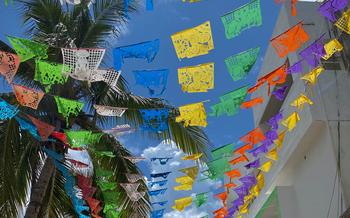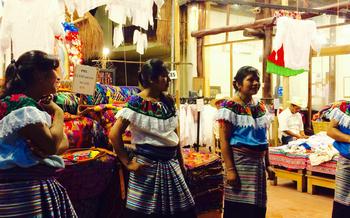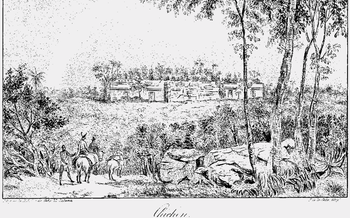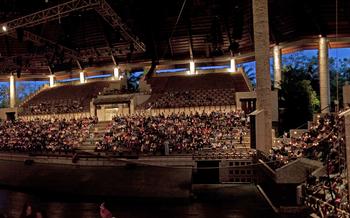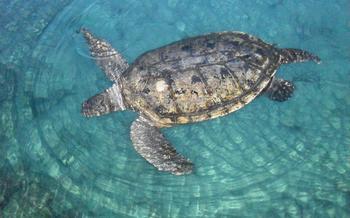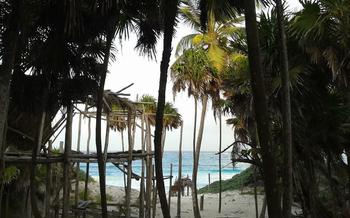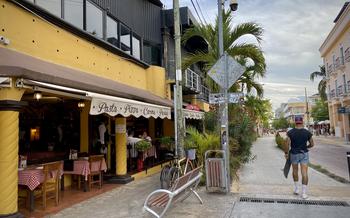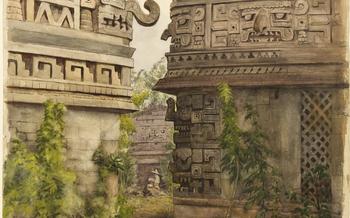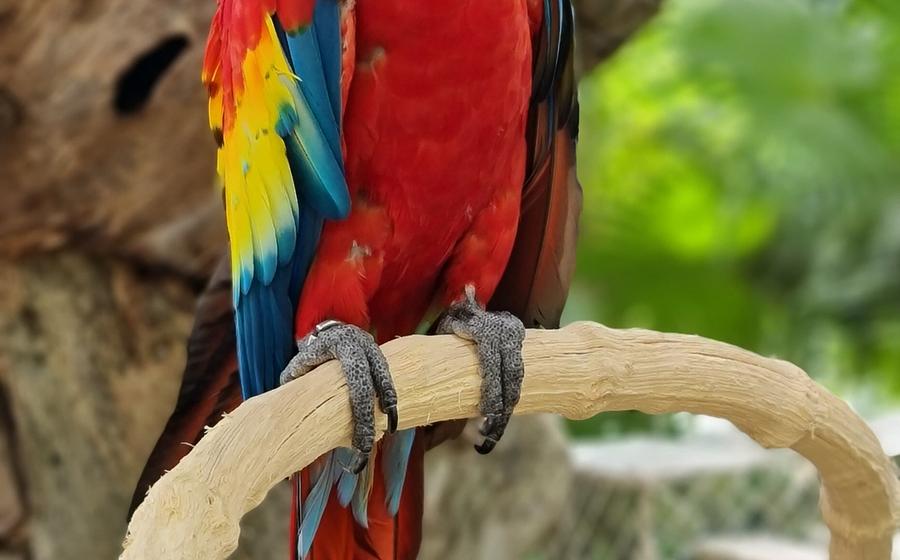
Gran Cenote
- Gran Cenote: A Hidden Gem in the Riviera Maya
- Location and Accessibility
- Hours of Operation and Admission Fees
- Facilities and Amenities
- Safety and Precautions
- Snorkeling and Diving
- Swimming and Floating
- Exploring the Caves
- Wildlife and Birdwatching
- Cultural Significance
- Local Guides and Tours
- Nearby Attractions:
- Planning Your Visit
- Insider Tip: Hidden Paths and Secret Spots
Gran Cenote: A Hidden Gem in the Riviera Maya
Nestled in the heart of the Riviera Maya, the Gran Cenote is a natural wonder that invites travelers to explore its pristine waters and immerse themselves in its rich cultural significance. This enchanting cenote, with its crystal-clear waters and lush vegetation, is a testament to the region's diverse and captivating natural beauty.
History and significance:
The Gran Cenote holds a deep historical and cultural significance for the Mayan civilization. The Mayans revered cenotes as sacred water sources, considering them portals to the underworld. Ancient Mayan rituals and ceremonies were often performed at these sacred sites, and the Gran Cenote was no exception. Archaeological discoveries have revealed artifacts and offerings within the cenote, offering a glimpse into the spiritual practices of the ancient Maya.
Unique geological features:
The Gran Cenote is renowned for its unique geological features. Formed by the collapse of a limestone bedrock, the cenote has created a series of interconnected chambers and tunnels, providing a fascinating underwater labyrinth for exploration. These chambers are adorned with stalactites and stalagmites that have formed over thousands of years, creating a surreal and awe-inspiring landscape.
Abundant wildlife and vegetation:
The Gran Cenote is a haven for biodiversity, boasting a remarkable array of wildlife and vegetation. Submerged aquatic plants thrive in the cenote's crystal-clear waters, providing a vital habitat for various fish species, turtles, and other aquatic creatures. The surrounding lush vegetation, with its tropical trees and vibrant flowers, creates a serene and picturesque setting.
Location and Accessibility
The Gran Cenote is situated in the heart of the Riviera Maya, a region renowned for its natural beauty and cultural heritage. It is conveniently located just a short drive from the popular tourist destinations of Playa del Carmen and Tulum. Getting to the cenote is a breeze, as it is accessible by car, taxi, or organized tour. Ample parking is available on-site for those who choose to drive. Whether you're staying in a nearby resort or exploring the region on a day trip, the Gran Cenote is easily accessible and ready to offer an unforgettable experience.
Hours of Operation and Admission Fees
The Gran Cenote is open to visitors every day of the week, from 8:00 AM to 5:30 PM. Ticket prices for adults start at 300 pesos (approximately $15 USD) and for children between 4 and 12 years old are 150 pesos (approximately $50 USD). Discounts are available for seniors and students with valid identification, as well as for groups of 10 or more people.
To enhance your experience, consider purchasing the Xcaret Plus ticket, which grants you access to the cenote, as well as to the Xcaret Park, a renowned eco-theme park located nearby. This combo ticket offers great value and allows you to enjoy a full day of adventure and relaxation.
Facilities and Amenities
The Gran Cenote is equipped with a range of facilities and amenities to ensure a comfortable and enjoyable experience for visitors. Changing rooms and showers are available for rinsing off and changing into dry clothes after swimming. Lockers are provided to store personal belongings and valuables securely.
For those seeking refreshments, there are several food and beverage options within the cenote grounds. A small restaurant offers a variety of snacks, meals, and beverages, including fresh ceviche, tacos, and tropical drinks. For those who prefer to enjoy a picnic, there are designated picnic areas where you can set up your own food and drinks.
Safety and Precautions
The Gran Cenote is generally considered a safe and family-friendly destination. However, like any natural water body, it's essential to take precautions to ensure a safe and enjoyable experience.
Water Depth and Clarity: The cenote's water depth ranges from 1 to 5 meters (3 to 16 feet). While the water is generally clear, visibility can be affected by weather conditions and the number of visitors. It's advisable to wear goggles or a mask for better underwater visibility.
Lifeguards on Duty: Lifeguards are present at the Gran Cenote to ensure the safety of visitors. They monitor the swimming areas and provide assistance if needed.
Recommended Safety Measures:
Non-swimmers and children should wear life jackets provided by the cenote.
Be aware of your surroundings and avoid swimming near the edges of the cenote, where the water can be deeper.
Do not jump or dive into the cenote, as there may be hidden obstacles or shallow areas.
Avoid touching or disturbing the wildlife, including the fish and turtles.
Stay hydrated by drinking plenty of water, especially in the hot and humid climate of the Riviera Maya.
Snorkeling and Diving
The Gran Cenote is a haven for snorkeling and diving enthusiasts, offering exceptional underwater visibility and a vibrant marine ecosystem. Snorkelers can glide through the crystal-clear waters, admiring the colorful coral formations and encountering a diverse array of tropical fish, including angelfish, parrotfish, and damselfish. Divers, on the other hand, can explore the cenote's underwater caves and tunnels, discovering hidden chambers and encountering larger marine life, such as turtles, rays, and even bull sharks. For those new to snorkeling or diving, guided tours and equipment rental are available to ensure a safe and enjoyable experience.
Swimming and Floating
The Gran Cenote offers a tranquil and refreshing experience for those seeking relaxation and serenity. Swimmers can glide effortlessly through the crystal-clear waters, marveling at the vibrant aquatic life and the mesmerizing reflections dancing on the surface. Whether you prefer to swim laps for a refreshing workout or simply float and bask in the warm embrace of the cenote's waters, you'll find the perfect spot to unwind and rejuvenate.
The cenote's unique geological features create pockets of shallow and deeper areas, catering to swimmers of all levels. The shallow areas provide a safe and comfortable environment for beginners or those who prefer to keep their feet close to the ground. As you venture deeper, you'll encounter areas where the water gradually deepens, allowing you to dive and explore the underwater world.
One of the remarkable characteristics of the Gran Cenote is its high mineral content, which contributes to its buoyancy. As you float effortlessly on the water's surface, you'll feel a sense of weightlessness and tranquility, allowing you to fully surrender to the cenote's calming embrace.
Exploring the Caves
Venturing into the caves of Gran Cenote is like stepping back in time and immersing yourself in the ancient world of the Mayans. These subterranean chambers, adorned with unique rock formations and stalactites, offer a glimpse into the geological wonders that lie beneath the surface of the Yucatan Peninsula.
Guided cave tours are available, led by experienced guides who can shed light on the history, geology, and cultural significance of the cenote. During these tours, you'll have the chance to see ancient Mayan artifacts, such as pottery shards and ceremonial objects, that have been left behind over the centuries.
The caves also provide a habitat for a variety of wildlife, including bats, spiders, and insects. Keep an eye out for these creatures as you explore the dark recesses of the cenote.
Exploring the caves of Gran Cenote is a truly unique and unforgettable experience that will leave you in awe of the natural and cultural wonders that Mexico has to offer.
Wildlife and Birdwatching
While exploring Gran Cenote, nature enthusiasts and birdwatchers will be in paradise. The cenote is home to a diverse array of resident and migratory bird species, making it a haven for birdwatching. Keep an eye out for colorful songbirds, majestic hawks, and the occasional osprey soaring overhead. The crystal-clear waters of the cenote also provide refuge for various turtles, fish, and other aquatic creatures.
The cenote's ecosystem is a delicate balance, and the local community has made significant efforts to conserve and protect its wildlife. Visitors are encouraged to respect the natural habitat and refrain from disturbing the wildlife. By doing so, they contribute to the preservation of this unique and biodiverse environment.
Cultural Significance
The Gran Cenote holds immense cultural significance for the Maya people and is deeply intertwined with their history, beliefs, and traditions. These natural water reservoirs were considered sacred by the Maya, who believed they were portals to the underworld and the abode of various deities. Cenotes were often used for religious ceremonies, rituals, and purification rites. Offerings and sacrifices were made to appease the gods and seek their blessings.
In Mayan mythology, cenotes were believed to be connected to the rain god Chaac, and it was thought that by performing rituals and offerings at the cenotes, people could influence the weather and ensure a bountiful harvest. The cenotes were also seen as places of healing and rejuvenation, and it was believed that bathing in their waters could cure illnesses and bring good health.
Today, the Gran Cenote continues to be a place of cultural importance for the Maya people, and many traditional ceremonies and rituals are still performed there. It is also a popular destination for tourists who are interested in learning about the rich cultural heritage of the region.
Local Guides and Tours
Experienced Guides with Local Knowledge:
When exploring Gran Cenote, consider enlisting the services of a local guide. These knowledgeable individuals, often from the local Mayan community, offer a wealth of insights into the cenote's history, geology, and ecology. Their firsthand knowledge and stories bring the cenote to life, enhancing your overall experience.
Guided Tours for a Deeper Understanding:
Opting for a guided tour is an excellent way to gain a deeper understanding of the cenote's unique features and significance. These tours typically cover the history, geology, and ecology of the cenote, pointing out specific areas of interest and explaining the importance of preserving this natural wonder.
Personalized Recommendations:
Local guides can provide personalized recommendations tailored to your interests and preferences. Whether you're a passionate photographer seeking the best angles or an avid birdwatcher looking for rare species, your guide can lead you to the most suitable spots within the cenote.
Nearby Attractions:
While exploring the wonders of the Gran Cenote, you'll find yourself surrounded by a plethora of other fascinating attractions that make this region a must-visit destination. Xcaret Park, a renowned eco-theme park, is just a stone's throw away, offering an immersive experience into the natural and cultural heritage of Mexico. Here, you can swim with dolphins, explore underground rivers, witness awe-inspiring cultural performances, and indulge in culinary delights inspired by traditional Mayan cuisine.
Beyond Xcaret, the Riviera Maya boasts an array of ancient Mayan ruins and archaeological sites that transport you back in time. Tulum, with its iconic clifftop ruins overlooking the turquoise Caribbean Sea, is a must-see for history buffs and nature enthusiasts alike. Cobá, another ancient city, invites you to climb its towering Nohoch Mul pyramid for breathtaking panoramic views of the surrounding jungle.
If relaxation and sun-soaked days are more your style, the Riviera Maya has no shortage of pristine beaches, serene lagoons, and hidden cenotes waiting to be discovered. From the white-sand beaches of Playa del Carmen to the tranquil waters of the Yal-Ku Lagoon, there's a perfect spot for every beach lover. And with over 6,000 cenotes scattered throughout the region, each with its own unique charm, you'll be spoilt for choice when it comes to finding your own private oasis.
Planning Your Visit
While the Gran Cenote is a year-round destination, the best time to visit is during the dry season, from November to April, when the weather is at its best and crowds are smaller. Avoid the peak season (December to February) if you prefer a more tranquil experience.
Packing Essentials:
- Swimwear and a cover-up
- Sunscreen and insect repellent
- A hat and sunglasses
- Water shoes or sandals for navigating the rocky terrain
- A waterproof camera or underwater housing for capturing stunning shots
- A small backpack or tote bag for carrying your essentials
Itinerary Suggestions:
- Arrive early to beat the crowds and enjoy the cenote at its most serene.
- Allocate at least 2-3 hours to fully explore the cenote and its surroundings.
- Plan to spend time snorkeling or diving to witness the incredible underwater world.
- Relax and unwind in the cenote's crystal-clear waters, taking breaks to soak up the sun and enjoy the natural beauty.
- If you have more time, combine your visit to the Gran Cenote with a trip to Xcaret Park or other nearby attractions.
Insider Tip: Hidden Paths and Secret Spots
While the Gran Cenote is a popular destination, there are still hidden paths and secret spots waiting to be discovered. If you're looking to escape the crowds and experience the cenote in tranquility, venture off the main paths and explore the lesser-known areas. Follow the winding trails that lead to secluded corners, where you can immerse yourself in the beauty of the cenote without distractions. Keep an eye out for hidden caves and secret chambers, where you might find ancient Mayan artifacts or encounter unique wildlife. These hidden gems offer a chance to connect with the cenote on a deeper level and create lasting memories.
